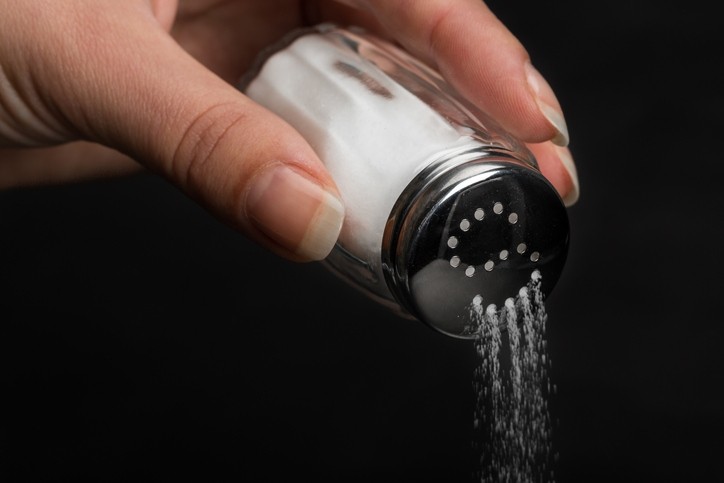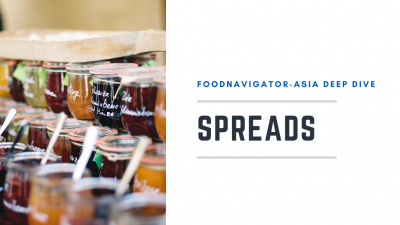Salt reduction findings: Reducing daily intake by four grammes most effective in reducing CVD risks: 30-year modelling study

High sodium intake is known to increase blood pressure and hypertension risks, acting as a precursor to cardiovascular disease (CVD).
Singapore’s daily salt intake is estimated at 9 grams daily, according to the National Nutrition Survey in 2018. The World Health Organization recommends a maximum of 5g of salt daily.
In Singapore, several campaigns have been introduced such as the War on Salt campaign in 2011 which saw the development of healthier salt with 25% less sodium than regular salt, among other initiatives.
The Healthier Choice Symbol Programme was also launched for packaged foods with the Lower in Sodium label on foods containing 25% lower sodium levels in comparison with similar products.
However, the average daily salt intake has stayed about the same since 2011.
There are currently no large-scale estimates studying the impact of these interventions on the chronic disease outcome of the Singaporean population.
So, researchers from the Saw Swee Hock School of Public Health at the National University of Singapore conducted a study to model the impact of different salt reduction interventions for the next 30 years.
The study was published in the journal Nutrients.
Study design
For this study, researchers assessed the effects of 0.5, 2 and 4g salt reduction daily.
The study modelled four demographic groups, the whole population, elderly (65 years and above), overweight and obese (BMI greater than 23), and diabetic individuals.
The latter three groups are considered high risk groups in CVD incidence.
Researchers examined the impact of the different salt reduction interventions to the number of incident cases averted of acute myocardial infarction (AMI) and stroke until the year 2050.
They used data from existing systematic reviews and meta-analysis to model the impact for the next 30 years.
Data were obtained from the Singapore Myocardial Infarction Registry and the Singapore Stroke Registry.
Researchers used information from the National Nutrition Survey 2010 to obtain information on salt consumption.
Biggest reduction
Based on the results, a 4g/day reduction in salt consumption was most effective when implemented across the entire population, resulting in 24,000 averted incident cases of cardiovascular disease over 30 years.
When targeted at specific high-risk demographic groups, the largest effects were observed in the overweight and obese, with the same intervention (4g/day) yielding 10,500 averted incident cases of cardiovascular disease (3,000 AMI, 7,500 stroke).
Findings also showed that a 0.5 and 2.0 g/day reduction in salt consumption among the entire population showed similar trend to the 4g/day intervention, but at a slower rate.
From these results, the implementation of a 4.0 g reduction in daily salt intake population-wide averted the greatest incidence for stroke and AMI, with the effect most prominent in the overweight population.
“Should a population-wide intervention be unfeasible, however, a 4.0g reduction in the overweight would be highly effective,” researchers said.
Interventions involving the elderly group did not yield great benefits in averting cases of AMI and stroke over the 30-year period.
Researchers think “Individuals in this high-risk stratum may have had long-term high salt intake and consequent organ damage. Regardless, this group should be prioritised as a key target group for salt-reduction interventions through careful management of their daily salt intake, which can effectively reduce their risk of mortality as well as improve their quality of life.”
Salt in diet
In most Western countries, about 75% of dietary salt comes from processed and restaurant-prepared foods, however in Singapore, 75% of intake comes from table salt, sauces and seasonings added during food preparation.
So, efforts to lower sodium intake must address these sources.
According to Dr Salome Rebello who is a lecturer at the Saw Swee Hock School of Public Health, National University of Singapore, people can consider using lower-sodium salts at home.
“Switching processed foods such as chips, instant noodles or biscuits with less processed options like fruits or unsalted nuts, is also a general guideline for consumers to lower sodium intake,” she told FoodNavigator-Asia.
The Singapore government also introduced a Whole-of-Government (WOG) Healthier Catering policy which will see caterers use lower sodium salt, sauces or seasonings effective from May 2021.
Rebello was not involved in the current study.
Limitations and recommendations
Researchers acknowledged that the study had some limitations.
“The relative risk reductions were assumed to have affected all strata of the population equally, whereas, in reality, a dose–response relationship would be observed. Individuals with a much higher baseline salt consumption would benefit more from salt reduction interventions than those who are only slightly overconsuming salt in their diets.”
Despite these limitations, the findings suggest the prioritisation of the overweight and obese populations as key target intervention groups of salt-reduction programmes in Singapore.
This could be achieved through a comprehensive and large-scale public health education, a regulation of salt or sodium content in processed foods and encouraging the use of healthier ingredients by the food and beverage industry particularly in hawker centres (Singapore’s local food centres), food courts, and fast food restaurants.
Rebello added: “Labelling eatery foods to show salt levels can be a measure that is considered to help people make wiser decisions and motivate reformulation amongst retailers.”
Initiatives to reduce salt levels in processed and ready-to-eat foods in supermarkets should also be considered.
Source: Nutrients
https://doi.org/10.3390/nu13041171
“Assessing the Impact of Salt Reduction Initiatives on the Chronic Disease Burden of Singapore”
Authors: Borame L. Dickens, et al.
















